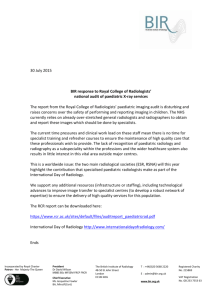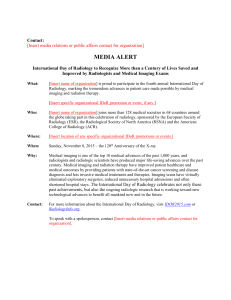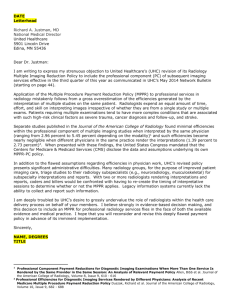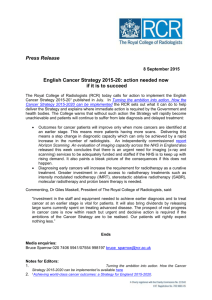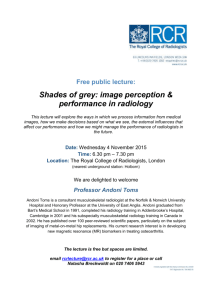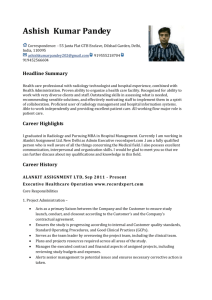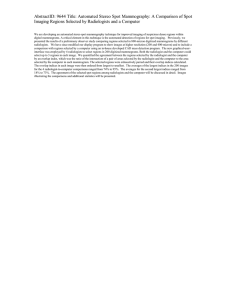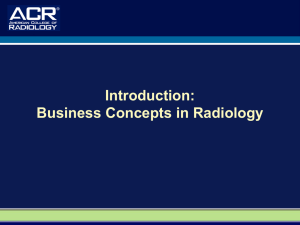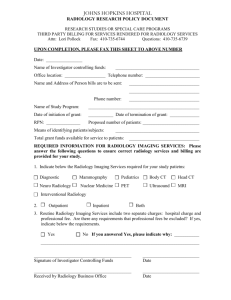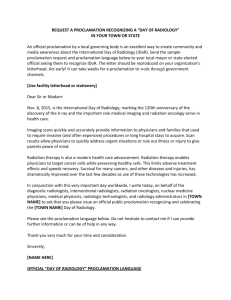The Royal College of Radiologists – Giles Maskell
advertisement
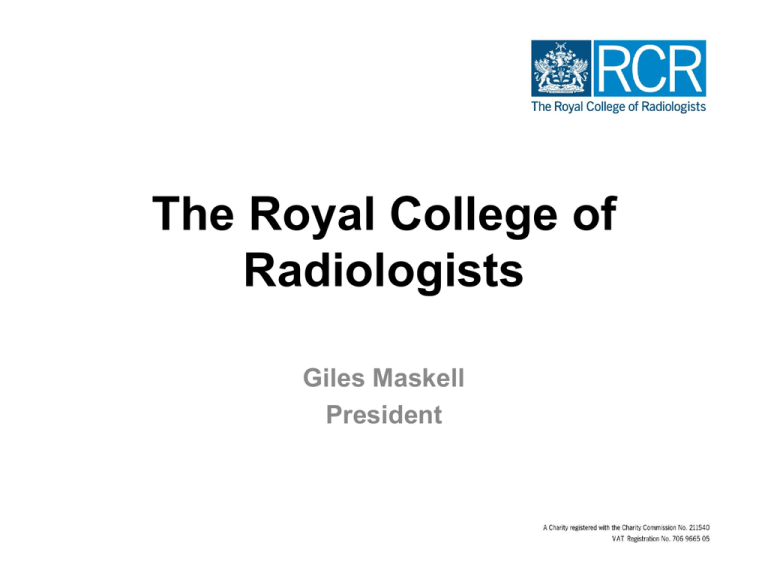
The Royal College of Radiologists Giles Maskell President • Causes of variation • The work of the RCR • Referral guidance • Accreditation • The future role of the radiologist • The focus on patients Causes of variation • Technological innovation and changes in clinical practice • Equipment • Expertise • Availability/capacity • Culture What does the RCR do? Leadership Education Support A few of the things the RCR does • • • • • • • • • • prepares and issues guidance and sets standards across the range of radiological practice Designs, delivers and assures the quality of training Referral guidelines (i-Refer) Conducts national audits – nephrostomy, liver biopsy, cancer staging conducts workforce and workload censuses READ – shared learning from experience CPD – conferences and events Supports radiologists and radiology departments in difficulty Runs an accreditation scheme for radiology departments (ISAS) Lobbies health policy makers to promote the role of imaging and radiologists in healthcare A few of the things the RCR does • • • • • • • • • • prepares and issues guidance and sets standards across the range of radiological practice Designs, delivers and assures the quality of training Referral guidelines (i-Refer) Conducts national audits – nephrostomy, liver biopsy, cancer staging conducts workforce and workload censuses READ – shared learning from experience CPD – conferences and events Supports radiologists and radiology departments in difficulty Runs an accreditation scheme for radiology departments (ISAS) Lobbies health policy makers to promote the role of imaging and radiologists in healthcare i-Refer • 21 year history, now in 7th edition • Formerly known as “Making Best Use of a Department of Clinical Radiology” (MBUR) • Available free on N3 to NHS users in all 4 countries (also as Apple and Android app) • Sophisticated methodology using Delphi process • 14000 hours of consultant radiologist time • Accredited by NICE/NHS Evidence • International leader Imaging Services Accreditation Scheme (ISAS) ISAS • A patient focussed accreditation scheme • 4 domains: • • • • Clinical Facilities, Resources and workforce Patient experience Safety • 50 radiology services in England already engaged in the process and supported by the National Imaging Programme Board in Wales The future role of the radiologist • A readily available resource for advice on diagnostic pathways • At the interface between traditional primary and secondary care, taking control of patient pathways • At the “front door” of the hospital promoting early discharge • Central to the development of “personalised medicine” through molecular imaging • Undertaking an increasing range of minimally invasive techniques, replacing traditional therapies esp in cancer care. Our future relationship with patients • Increased direct contact • Increased public awareness and interest in imaging (including errors) • ? Reports direct to patients

